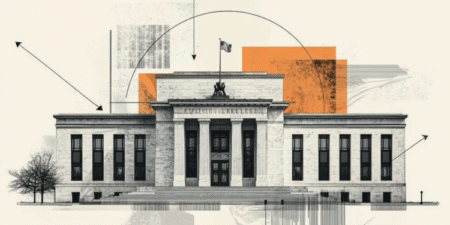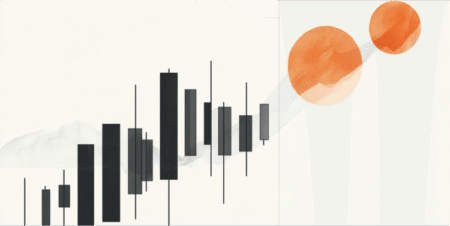- The Pound Sterling trades lower against its major peers as the UK GDP unexpectedly declined by 0.1% in May.
- US President Trump mulls to increase 10% tariff blanket to 15% or 20%.
- Investors shift their focus to the US-UK CPI data for June next week.
The Pound Sterling (GBP) faces selling pressure against its peers on Friday after the release of weak United Kingdom (UK) Gross Domestic Product (GDP) and factory data for May. The Office for National Statistics (ONS) reported that the UK economy declined by 0.1% on month, against expectations of a 0.1% expansion.
In April, the UK GDP contracted by 0.3%, extending the decline in economic activity for a second straight month.
The poor performance of the industrial sector was one of the reasons behind the economic contraction, data from the ONS showed. Month-on-month Industrial Production fell at a faster pace of 0.9% compared to the 0.6% drop seen in April. Economists expected Industrial production to have remained flat. On month, Manufacturing Production contracted by 1%, faster than estimates of 0.1% and the prior reading of 0.7%.
UK Chancellor of the Exchequer Rachel Reeves stated that GDP figures are disappointing and vowed to kickstart domestic growth. “Getting more money in people’s pockets is my number one mission. While today’s figures are disappointing, I am determined to kickstart economic growth and deliver on that promise,” Reeves said, The Guardian reported.
Declining UK GDP and factory production reinforce market expectations that the Bank of England (BoE) could reduce interest rates in the August policy meeting, a scenario that is theoretically unfavorable for the British currency.
Going forward, the next major triggers for the Pound Sterling will be the UK Consumer Price Index (CPI) data for June and the employment data for the three-months ending May, which will be published next week.
Investors will pay close attention to the labor market data as BoE officials, including Governor Andrew Bailey, have warned of employment risks due to the increase in the employers’ contribution to the social security scheme, which became effective in April. Soft employment data would prompt even more market expectations that the BoE could reduce interest rates in the policy meeting next month.
Meanwhile, fiscal risks to the UK remain high since the announcement of an increase in the welfare spending bill. Last week, Chancellor of the Exchequer increased the standard allowance for the Universal Credit (UC), a move that led to a sharp increase in gilt yields and weighed on the Pound Sterling. The announcement of an increase in the welfare spending bill is set to widen the UK’s financial burden by £4.8 billion by fiscal year 2029-2030.
British Pound PRICE Today
The table below shows the percentage change of British Pound (GBP) against listed major currencies today. British Pound was the weakest against the Swiss Franc.
| USD | EUR | GBP | JPY | CAD | AUD | NZD | CHF | |
|---|---|---|---|---|---|---|---|---|
| USD | 0.06% | 0.28% | 0.46% | 0.30% | -0.01% | 0.21% | -0.10% | |
| EUR | -0.06% | 0.20% | 0.41% | 0.21% | 0.01% | 0.13% | -0.16% | |
| GBP | -0.28% | -0.20% | 0.22% | -0.00% | -0.18% | -0.03% | -0.40% | |
| JPY | -0.46% | -0.41% | -0.22% | -0.18% | -0.48% | -0.29% | -0.59% | |
| CAD | -0.30% | -0.21% | 0.00% | 0.18% | -0.24% | -0.09% | -0.39% | |
| AUD | 0.00% | -0.01% | 0.18% | 0.48% | 0.24% | 0.27% | -0.18% | |
| NZD | -0.21% | -0.13% | 0.03% | 0.29% | 0.09% | -0.27% | -0.35% | |
| CHF | 0.10% | 0.16% | 0.40% | 0.59% | 0.39% | 0.18% | 0.35% |
The heat map shows percentage changes of major currencies against each other. The base currency is picked from the left column, while the quote currency is picked from the top row. For example, if you pick the British Pound from the left column and move along the horizontal line to the US Dollar, the percentage change displayed in the box will represent GBP (base)/USD (quote).
Daily digest market movers: Pound Sterling posts a fresh two-week low against US Dollar
- The Pound Sterling refreshes over two-week low near 1.3530 against the US Dollar (USD) on Friday. The GBP/USD pair trades lower amid weak UK monthly GDP data for May and sour market sentiment.
- The demand for riskier assets, such as the Pound Sterling, has diminished as United States (US) President Donald Trump floated his intentions to raise the tariff blanket for nations that failed to strike a deal during the 90-day reciprocal tariff pause period. “We’re just going to say all of the remaining countries are going to pay, whether it’s 20% or 15%. We’ll work that out now,” Trump said in a telephone interview with NBC News on Thursday. On so-called “Liberation Day” on April 2, Trump announced a 10% blanket levy for all of the US trading partners, separate from reciprocal tariffs and additional sectoral duties.
- US President Trump has also imposed 35% tariffs on Canada, one of Washington’s key trading partners, and has threatened to send a letter to the European Union (EU), specifying tariff rates.
- Fresh tariff threats by President Trump have led to an increase in demand for safe-haven assets. Meanwhile, the US Dollar Index (DXY), which tracks the Greenback’s value against six major currencies, reclaims a two-week high around 97.90.
- As for the US economic calendar, investors await the US CPI data for June, which will be published on Tuesday. The inflation data will likely show the impact of sectoral tariffs, which will influence market expectations for the Federal Reserve’s (Fed) monetary policy outlook. Currently, markets are almost certain that the Fed will leave interest rates in the range of 4.25%-4.50% in the policy meeting later this month, according to the CME FedWatch tool.
Technical Analysis: Pound Sterling sees downside below 1.3400
The Pound Sterling falls to near a two-week low around 1.3540 against the US Dollar on Friday. The GBP/USD pair trades below the 20-day Exponential Moving Average (EMA), which is around 1.3590, suggesting that the near-term trend is bearish.
The 14-day Relative Strength Index (RSI) falls below 50.00. A fresh bearish momentum would emerge if the RSI continues to decline and breaks below 40.00.
Looking down, the June 23 low of 1.3370 will act as a key support zone. On the upside, the three-and-a-half-year high around 1.3800 will act as a key barrier.
Read the full article here
















